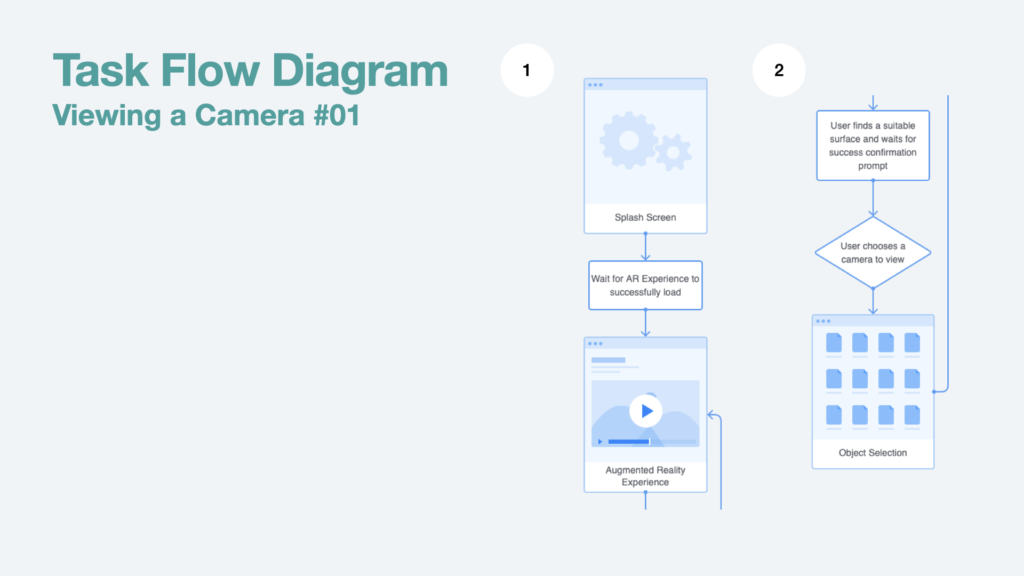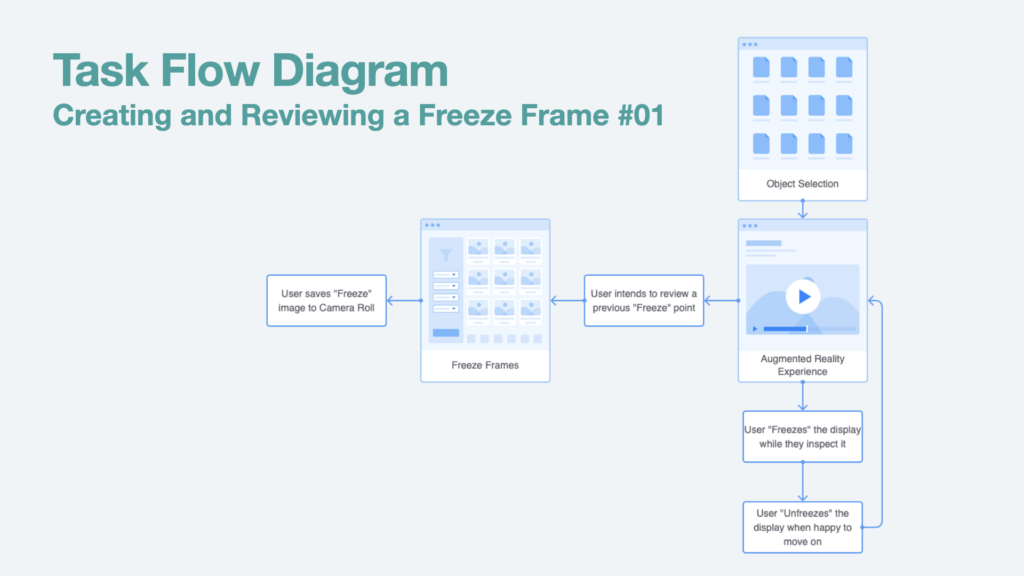Last week in my blog post I established some desired functionality and expected interaction between the user and the augmented reality experience. I can now move on to consider how the experience could be accessed by the user.
On the below presentation slide, I’ve illustrated the structure of a rudimental mobile application. I’ve kept it this way so that I can focus on learning to produce an augmented reality experience throughout module, and implement any further ideas in response to users needs in later research.

The user will begin by launching the mobile application and will see a splash screen while the application loads. At that point they will immediately be taken to the augmented reality experience. Via a menu the user could then access freeze frames, further instructions, an object selection screen, and a variety of accessibility settings.
A key task flow that will need to be considered during my testing is the ability for the user to import an object into the augmented reality experience – an example of this is importing a virtual camera model into the experience. Once the user has selected the camera in the object selection screen they are then returned to the augmented reality experience. See below…

In terms of accessibility, a key task flow will be to create freeze frames, whereby the augmented reality experience is paused and the screen is kept static, regardless of the device’s movements thereafter. As illustrated on the presentation slide below, the user must be able to freeze the screen, and then unfreeze it, to continue the experience. Ideally, the user would also then be able to access a library of recent “Freeze” points for review, as they may feel unable to achieve the same positioning or recreate the same angle due to changes in their impairments.

Both of the task flows in this blog post will be a priority for usability testing at both paper prototype and medium fidelity stages. This usability testing may prompt further iterations relating to these task flow functions.